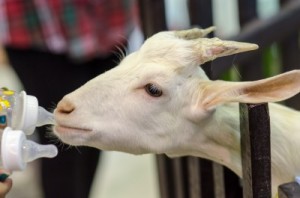 If you have goat kids or are expecting some, there are a few essential things to know about your baby goat(s). There are management guidelines farmers have come up with to produce the finest of bucks and nannies that should not go ignored. Focusing on the nutrition, housing, hygiene care, and exercising of a kid will help greatly with creating an amazing flock. One should even have a veterinarian to regularly check the health of their newborn or youngster.
If you have goat kids or are expecting some, there are a few essential things to know about your baby goat(s). There are management guidelines farmers have come up with to produce the finest of bucks and nannies that should not go ignored. Focusing on the nutrition, housing, hygiene care, and exercising of a kid will help greatly with creating an amazing flock. One should even have a veterinarian to regularly check the health of their newborn or youngster.
In the very beginning stages of a kid’s life, you should be prepared to help deliver the nanny’s baby. Once the baby goat drops, you will have to cut its navel cord from its mother. Trim it 3 to 4 inches long from the kid’s body, then dip the tip of it in iodine solution. This act will prevent infection from bacteria and dry the fleshy extension quickly. If there is blood on the cord, you will have to tie the navel with surgical suture material.
The first few hours of life are very important. The kid must be fed milk, preferably by the mother directly or else by bottle, within the first couple of hours of birth. This crucial feeding session will help develop the immune system of the newborn. Whatever nutrients and content is provided during this feeding will help determine the immunity to infection the kid has through its entire adult life as a nanny or billy.
After the first feeding, things will become more routine. If hand-rearing, you should provide the kid with frequent mini-meals of milk or baby goat formula. Make sure the newborn is getting at least four meals per day to help develop a strong digestive system, but do not overdo it. After the young goat is a month old, you can relax a little on the feeding schedule. Scale it down to three meals per day, which is the same as a nanny would do with her offspring. Weaning the babies off the bottle like a human child is quite normal.
Once the baby goat is one week old, you can also provide it with a premium starter-grain from a pet or farm supply store. This will give a “kick-start” to the young animal’s life. At least 16% of the feed should be crude protein. This will help the rumination process and the kid may chew, regurgitate, then re-chew the grain it has put in its mouth.
By the age of six months, a kid should be ready to be fed from a pail or even a feeder unit with an automatic supply. In the not uncommon case of a baby goat having scours or diarrhea, be sure to stock feed for kids that includes electrolytes in its make-up. This supplement keeps the new-born from dehydrating. No more than half the normal daily milk supply replacement should contain electrolytes.
When it comes to shelter and bedding, it’s pretty simple how things should be set up. The baby goat needs to reside in an area which is free of wind drafts, and is clean, and dry. In these early stages, it’s best for farmers with a large number of animals to keep kids to themselves or in very small groups. This prevents the spread of disease, allowing the immune system to develop without unnecessary challenges.
Last, at all times, be sure to provide your kids with fresh and clean water.

